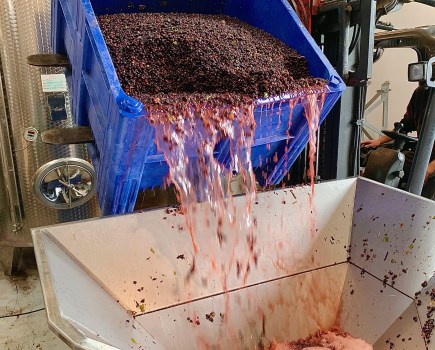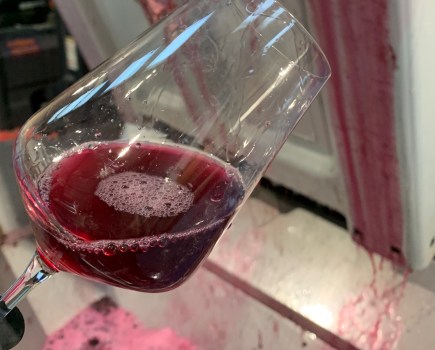Screwcaps, Stelcaps, 30×60’s, Vinotwist, however you refer to the screwcap closure used widely across the wine industry they may appear simple and easy to use for the end consumer but hide a technically precise engineering process and require great skill and attention to detail to apply to the bottle. Cap and metal quality/thickness, liner type and the bottle are important in the bottling process but most importantly it is the capping process itself so using a good quality machine is imperative. Calibrating the capping head before each bottling run is imperative to ensure consistency and quality and being able to check performance is critical to ensure a successful bottling.
Screw cap properties
Screw caps must be strong and enduring enough to last for decades, and easy enough to be quickly and effortlessly removed. The screw cap must present the liner in a correct position for sealing. It must also mould to the bottle while holding the liner in place. Finally, the cap must provide threads that enfold the bottle while providing adequate space for removal. The technical terms for the anatomy of the screw cap is shown in figure 1.
Screw cap liner
A cap liner is a non-permeable entity that functions to prevent liquid leakage and oxygen ingress. The presence of the liner adds a complicated part into the capping process, the average liner is about 2 millimetres thick and must be compressed to about half its original size to ensure a proper seal with the bottle. Characteristics of density largely come into play when compressibility is concerned. Typical pressure settings depending on the screw cap and bottle choice and can be easily adjusted before each bottling run. if the liner is not dense enough, it may be more prone to permeation. The liner plays a vital role in bottling and there are two key options (Saranex and Tin) used for wine outlined in figure 1.
Bottle
If the bottle is not made within an extremely detailed specification, it would be nearly impossible to create a quality product. Flaws in caps are rare and can easily be corrected however bottles leave much room for imperfections and flaws found in bottles are extremely complex to fix. The screw cap process needs a bottle of a higher quality standard than a typical cork mouth bottle. Figures 2 and 3 show the differences between a well-made bottle and a poorly made one with pitting on the mouth of the bottle that can lead to a poor seal and increased oxidation.
Screw cap and cork mouth bottles only differ from the neck area to the top (or the upper quarter of the bottle). Both bottles are made under a complex process, a gob of a molten combination of sand and glass is continuously pushed out of a furnace onto a slide. This gob follows a path into a mould. Once in the mould, the gobs of the molten mixture are hydraulically secured. Air is then pumped into the mould to expand the glass to the walls of the mould. Another clamp then comes down and shapes the neck in specified detail. The bottle’s shape is finalised and then released from the mould, allowed to cool and then pushed onto a conveyor belt with the other bottles. Each bottle is sprayed with a coating before it comes to rest in storage. Many significant measurements on the bottles come into play when aiming for a flawless product.
Thread is a critical aspect of the bottle and commonly varies in location, protrusion, and roundness. Proper thread structure is crucial for accurate cap location and functionality. Bottle thread inconsistency cannot be tolerated during the bottling process due to its critical impact. In addition the rim above the thread is significant in providing an area for the liner to rest and cause a sufficient seal along the bottle’s surface. Bead angle is vital in preventing the entire cap from slipping off, breaking any bridges upon removal. The bead is located just below the thread. Typically cap manufacturers aim for a tucked angle to be anywhere from 12° to 15°. Anything more than 12° to 15° may lead to loose caps. If the cap is not secured tightly enough at this position many other issues may occur as well. On the other hand, if the cap is secured too tightly at this position, cuts in the cap may appear during application.
The neck diameter of the bottle must be extremely precise to allow the cap to sit at an appropriate height on the bottle. The neck diameter is measured at 60 millimetres from the top of the bottle. It should be about the same diameter as the cap inner diameter. If it is too large, the cap may sit too high on the bottle for accurate application. If it is too small however, the cap may sit askew on top of the bottle and may be subjected to a misaligned finish. Lastly, bottle concentricity and height must be carefully controlled to ensure that the cap meets the bottle at the desired location.
Concentricity correlates with the vertical digression or perpendicularity of the bottle. If a bottle does not sit straight, there may be cuts in the sleeve and improper liner seals. Height is not likely to cause a huge issue unless it is grossly out of control. Typically the capper can adjust to accommodate different heights to a certain extent.
Capping process
The critical last step of capping is the application of the cap to the bottle. Once the cap is aligned on top of the bottle, a capper head grasps the bottle head and completes a four-step process.
1.The liner is compressed to the bottle surface by a pressure block.
2. The pressure block continues to travel down the bottle, drawing the outer edge closer to the bottle (known as the redraw).
3. A set of rollers spin down the side of the bottle, forming the aluminium sides in between the threads of the bottle.
4. Another set of rollers create a tuck underneath the thread of the bottle to prepare the bottom skirt for eventual removal. This is commonly referred to as the pilfer.
The amount the liner is compressed to the top surface is mainly attributed to the head pressure setting on average it is set to circa 160-180 ± 20 kilograms but depends on cap type and liner type. While the pressure block is compressing the liner and inducing a reform, the thread and tuck rollers are forming the aluminium side of the cap to the appropriate bottle positions. This is accomplished by a spinning motion around the cap. It is vital to set the roller pressure to a setting that will provide a strong seal, but not too strong as to damage the cap. If the pressure is too high, consumers may have difficulty removing caps from the bottle and cuts may occur on the surface of the cap. On the other hand, if the pressure is too low, the cap may not form a secure seal to the bottle. Heights of the rollers should be carefully aligned to the bottle as well. If a roller is misaligned the effectiveness and integrity of the cap may be completely void. Another main aspect of capping is the line speed. The appropriate line speed is dependent upon the amount of capper heads present. If the speed is too high, defects are likely to occur.
Other sources of variation
Many other causes of defects in the manufacturing process can easily arise. Cap defects can result from running the machinery too fast, warehouse storage policies, pressures and viscosity of the wine. Erben does technical testing, calibration and offers machinery to support all your capping needs. Our laboratory contains a number of instrumentation/test rigs including:
υ Digital vertical profile projector with 10 x zoom lens
υ 2 single headed bench mounted capping machines
υ Memmert HCP246 Humidity Chamber
υ Egitron electronic bottle neck internal control reader
υ CPG 200 internal pressure reading gauge for cans or bottles
υ MBT-200 digital reader device for measuring glass thickness in bottles
υ SST-2 Secure seal tester
υ X-rite exact computerised pantone reader/library
υ VAT-300 Digital perpendicular tester for glass bottles
υ Verivide light box




